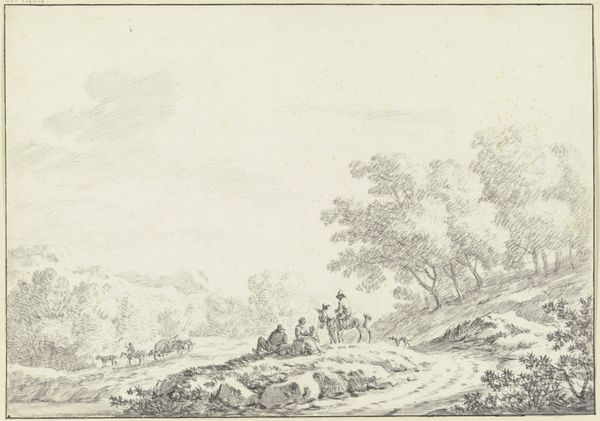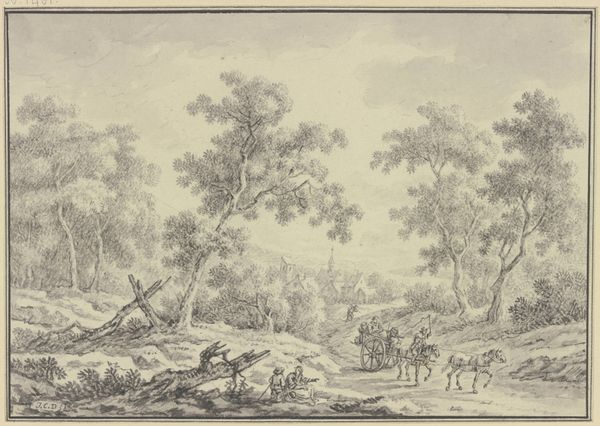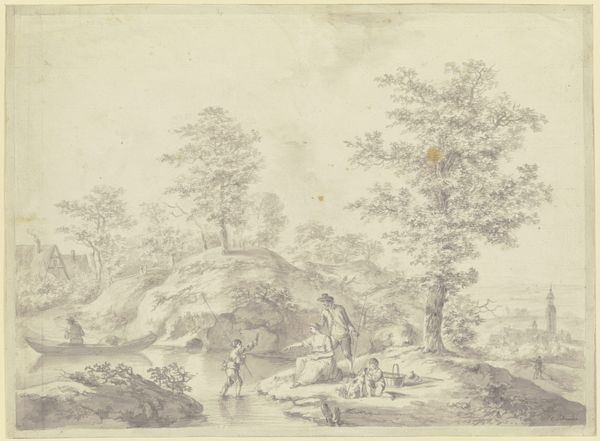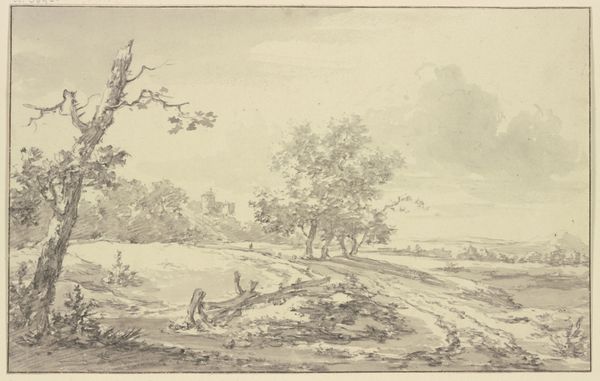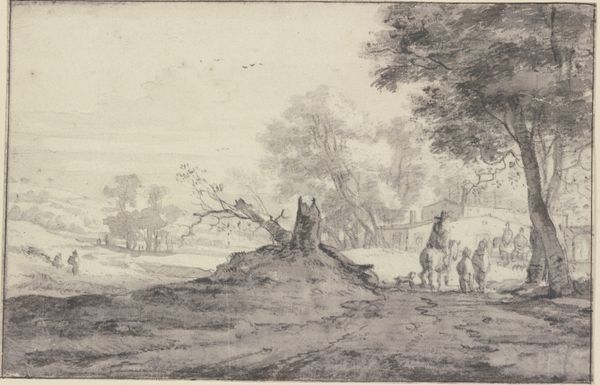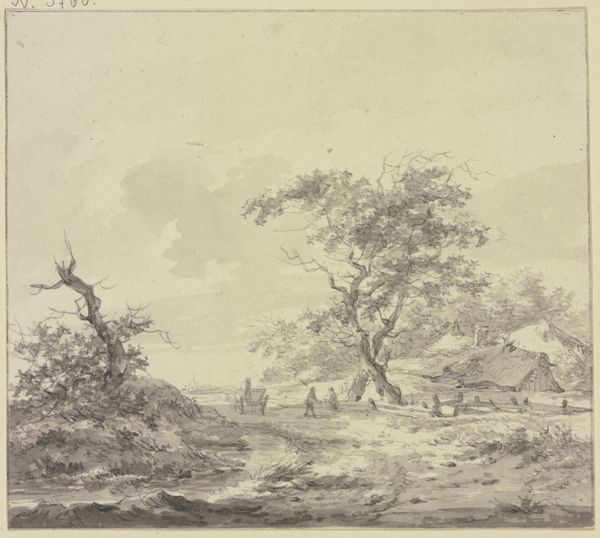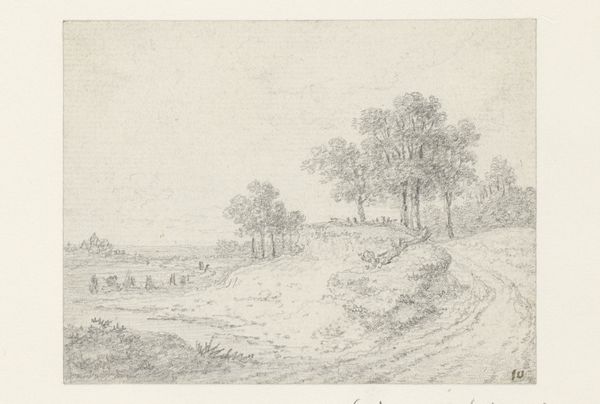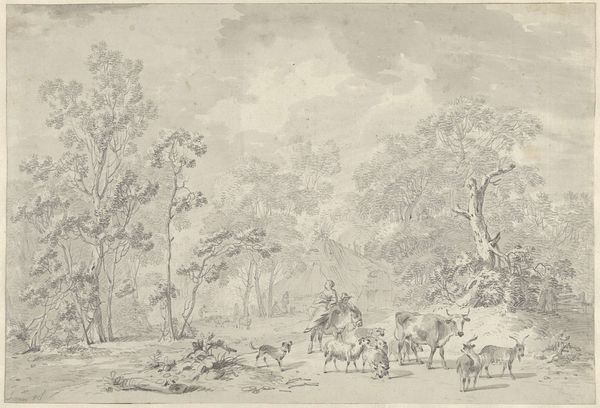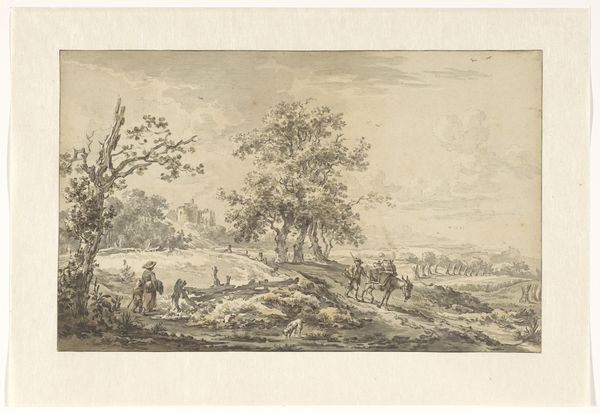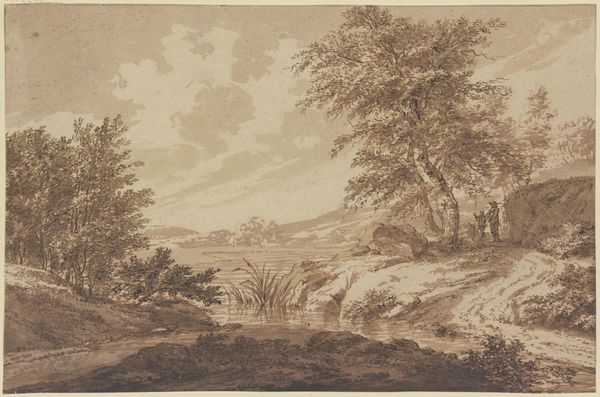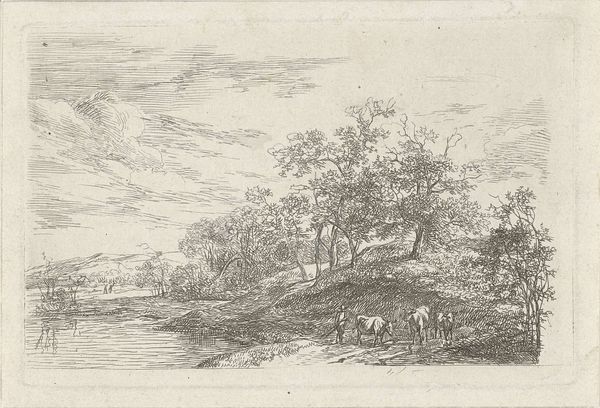
Landscape with Horseman Talking to Seated Figures 1730 - 1768
0:00
0:00
drawing, print, ink, graphite
#
drawing
#
narrative-art
# print
#
landscape
#
figuration
#
personal sketchbook
#
ink
#
sketchwork
#
ink drawing experimentation
#
pen-ink sketch
#
graphite
#
rococo
Dimensions: sheet: 5 11/16 x 7 7/16 in. (14.4 x 18.9 cm)
Copyright: Public Domain
Curator: This is Johann Christoph Dietzsch's "Landscape with Horseman Talking to Seated Figures," likely created sometime between 1730 and 1768. It's currently held here at the Metropolitan Museum of Art. It appears to be rendered in ink and graphite, a drawing that possibly served as a preliminary study. Editor: My initial impression is of quiet observation. The grey scale palette creates a contemplative, almost melancholic mood. It invites the viewer to ponder the unspoken narratives between these figures within a humble yet subtly crafted Rococo setting. Curator: The process is what intrigues me. Consider the artist, sketching outdoors, capturing this fleeting interaction. The Rococo period often celebrated lightness and playfulness, but here we see a more grounded scene. What about the cost of ink and paper at that time? Such material choices signal to me something about the value the artist gave to this type of spontaneous study. Editor: And those figures, situated along the edge of a tranquil waterway, invoke archetypal symbols of travelers, conversation, and respite. Notice the rider gesturing perhaps dispensing worldly wisdom or sharing news to the figures resting below him. This configuration is a narrative snapshot ripe with human significance. It speaks of hierarchical dynamics and perhaps a timeless desire for connection and guidance. Curator: The very act of making the image could also represent power dynamics at work, I imagine, how his access to these resources reflected his position, even relative to those he depicts. Look closer at how he's articulated the trees using delicate, repetitive strokes. Editor: Those strokes remind us of how nature in art represents not only aesthetic beauty, but the deeper psychological landscape within the viewer, where contemplation blossoms in tandem with observation of the natural world. Think, too, of the horseman – a common symbol of direction and control, though here perhaps tempered by humility, leaning into conversation rather than simply passing by. Curator: These small scale landscape works give us clues to what Dietzsch felt worth material investment in. Perhaps such preliminary sketches are just as valuable as grander oil paintings. It complicates ideas of production. Editor: Indeed. Examining the emotional undertones woven into the symbolic language helps illuminate the silent dialogues between ourselves and history through such deceptively "simple" scenes. Curator: This perspective sheds new light on my appreciation of the drawing as it speaks of value. Editor: And for me, your analysis anchors these transient symbols within a material reality of both objecthood and artistic labor. Thank you.
Comments
No comments
Be the first to comment and join the conversation on the ultimate creative platform.
